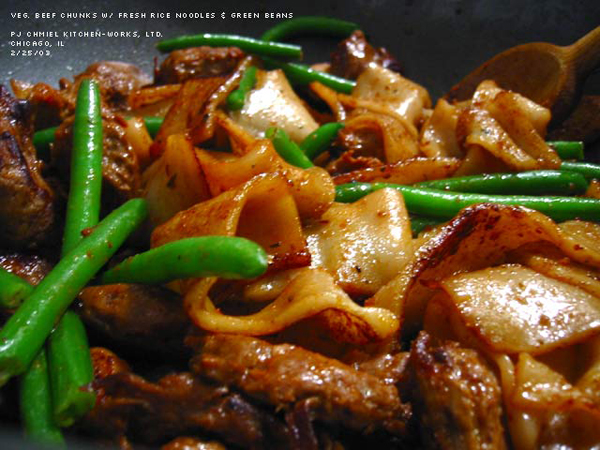|
This Webpage Title:
China - Food
China - Hong Kong - Macau

Today China accounts for 35% of the world's rice production. Rice is the world's single most important food crop and a primary food for more than a third of the world's population. China seeks to provide for its increasing population with improved agricultural technology and increase in fertile land.

Chinese cuisine is justifiably famous, memorably diverse - and generally not for the squeamish.
The Chinese themselves like to say they'll eat anything with four legs except a table.

For the most part, however, it's a case of doing ingenious things with a limited number of basic ingredients.
The cuisine can be divided into four regional categories: Beijing/Mandarin and Shandong (with steamed bread and noodles as staples), Cantonese and Chaozhou (lightly cooked meats and vegetables), Shanghainese (the home of 'red cooking' and wuxi spare ribs) and Sichuan (spicy, with lots of chilli).
Tea is the most common non-alcoholic beverage on sale, although Coca-Cola (both original and bogus) is making inroads, while beer is by far the most popular alcoholic drink.

'Wine' is a loose term which can cover oxidised and herb-soaked concoctions, rice wine and wine containing lizards, bees or pickled snakes.
Another favourite is maotai, a spirit made from sorghum which smells like rubbing alcohol and makes a good substitute for petrol or paint thinner.
Eating habits
Serving the Rice, Eating with Chopsticks
The Chinese are very practical people.
It is more efficient to eat rice in a bowl because you can pick up the bowl and bring it closer to your mouth, as opposed to plates.
Thus, rice is served in bowls. Once the rice is served, chopsticks come into play.
First, the chopsticks must be of wood, because wood chopsticks do not warp like plastic ones do after continual washing in warm water.
When using chopsticks, you only move the top one, held by your index finger and thumb. The bottom one is anchored in the groove between your thumb and index finger, and then held in place with the side your middle finger. These two chopsticks work in tandem to hold on the things.
Because the top part moves, there is physics involved.
The chopstick rotates about an axis that is your thumb and part of the index finger. Thus, there is a torque involved in moving the chopstick about his axis. t (torque) equals the force applied times the distance the force is applied from the axis.
When picking up the rice, this torque must be exactly the force required to hold the rice in place but at the same time not mushing it. Eating with chopsticks is eating with precision.
  
The main difference between Chinese and western eating habits is that unlike the West, where everyone has their own plate of food, in China the dishes are placed on the table and everybody shares. If you are being treated by a Chinese host, be prepared for a tonne of food. Chinese are very proud of their culture of cuisine and will do their best to show their hospitality.
And sometimes the Chinese host use their chopsticks to put food in your bowl or plate. This is a sign of politeness. The appropriate thing to do would be to eat the whatever-it-is and say how yummy it is. If you feel uncomfortable with this, you can just say a polite thank you and leave the food there.

Don't stick your chopsticks upright in the rice bowl. Instead, lay them on your dish. The reason for this is that when somebody dies, the shrine to them contains a bowl of sand or rice with two sticks of incense stuck upright in it. So if you stick your chopsticks in the rice bowl, it looks like this shrine and is equivalent to wishing death upon a person at the table!
Make sure the spout of the teapot is not facing anyone. It is impolite to set the teapot down where the spout is facing towards somebody. The spout should always be directed to where nobody is sitting, usually just outward from the table.

Don't tap on your bowl with your chopsticks. Beggars tap on their bowls, so this is not polite. Also, when the food is coming too slow in a restaurant, people will tap their bowls. If you are in someone's home, it is like insulting the cook.
There are many different types of Chinese cooking and foods, according to the region where people live in China.
Food is an essential part of Chinese culture.
In Beijing the bejing Duck is the most well known, (and expensive) but it is very time consuming to prepare.

In Guandong (Canton) steamed food or boiled or stir fried is the most popular
Sichuan food (south west China) is spicy, using chilli.

Shanghai is famous for it's noodles, stir fried.

A typical Chinese day would consist of taking three meals;
Breakfast: Congee, (porridge), or rice porridge, soup or deep fried pastries.

Lunch: Egg rolls, or dumplings stuffed with fish, shrimp or possible meat.

Dinner: vegetables with meat pieces, soup, rice, fish.

|